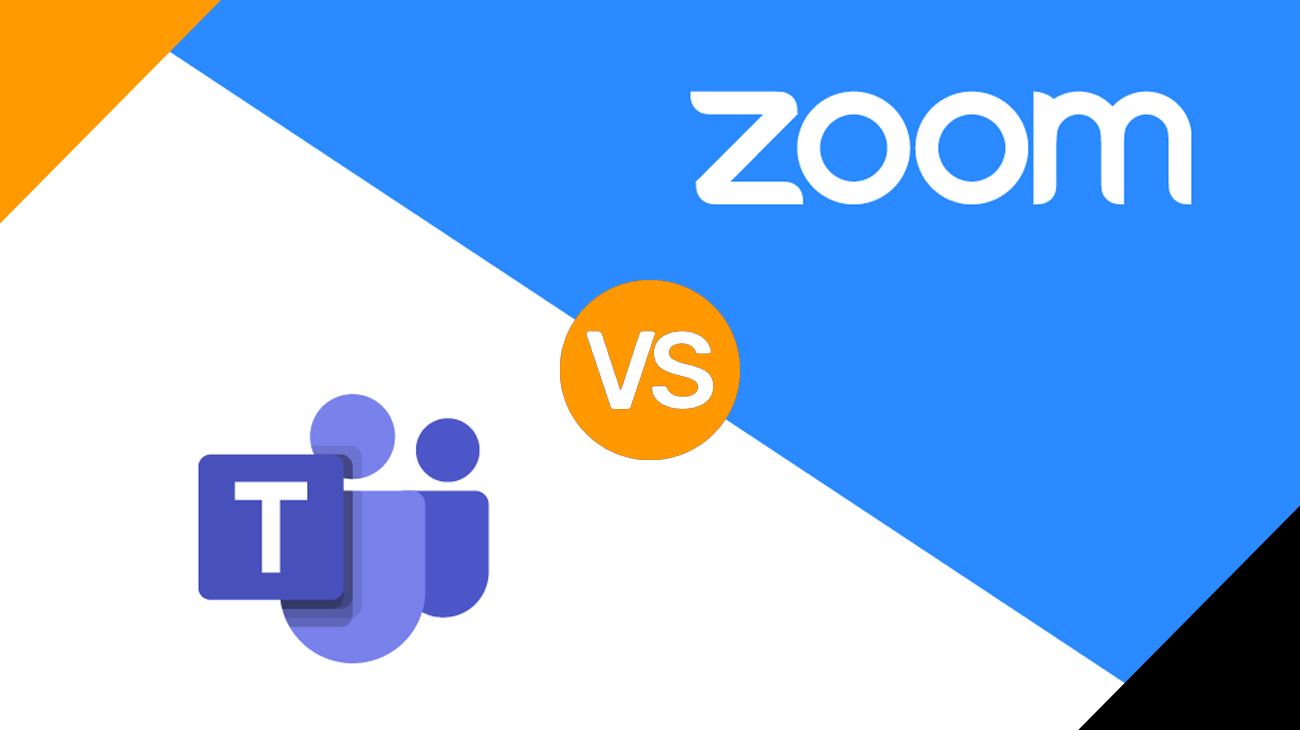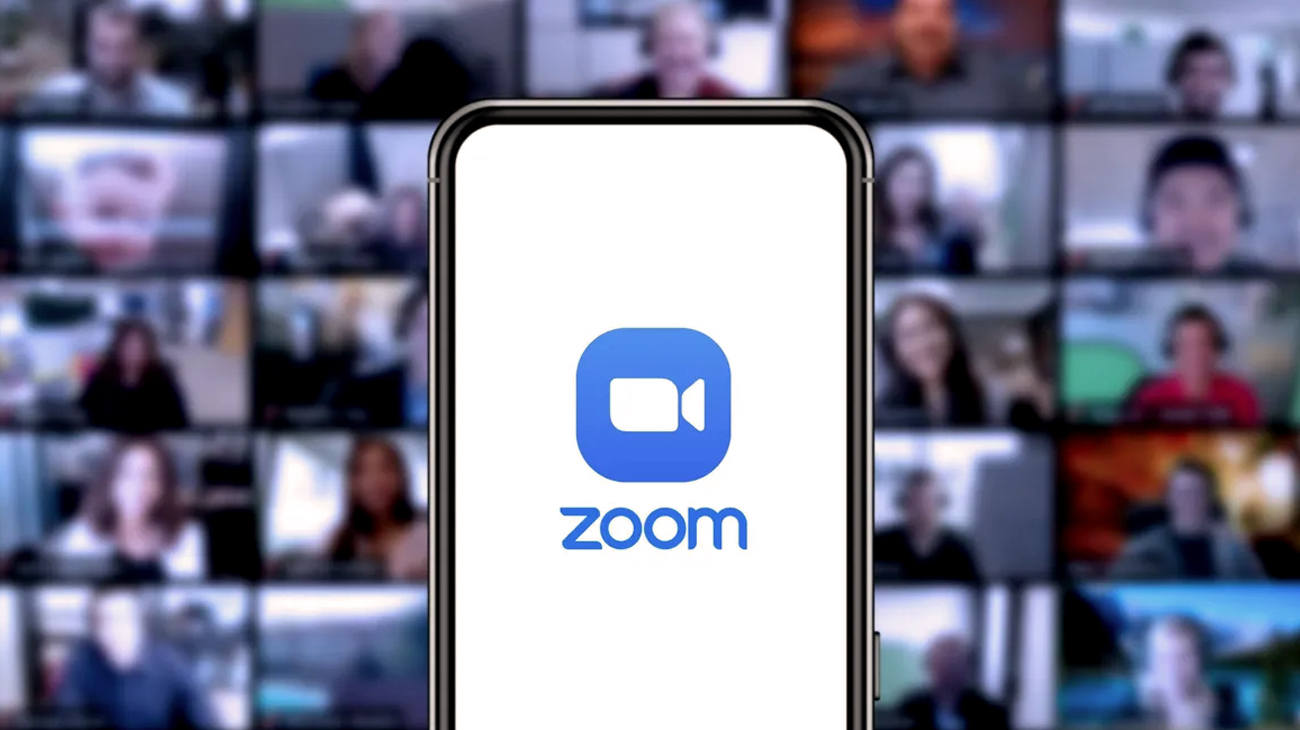Zoom vs. Teams: Which is better for remote meetings?

Microsoft Teams Vs. Zoom
In this digital age efficient communication and collaboration are essential for business as well as educational institutions, as well as for individuals. Due to the increasing use of online learning and remote work the need for reliable video conferencing platforms has been greater. Two leading competitors in this space are Zoom as well as Microsoft Teams. Although both provide robust capabilities that allow for video meetings, presentation and collaboration with teams, Zoom often emerges as the preferred choice of numerous users. Let’s explore the reasons why Zoom could be the best alternative to Microsoft Teams for your video conference needs. Why is Zoom better than Teams? Let’s explore the reasons why Zoom could be a superior option to Microsoft Teams for your video conference requirements.
Table of Contents
Why is Zoom better than Teams?

Why is Zoom better than Teams? It’s incredibly easy for outside participants to join a Zoom meeting from any device. All you need is a URL. This makes it a fantastic option for those who organize numerous meetings, whether small or large and with individuals outside of your group. The seamless experience for people you’ve invited to chat with you will be an advantage for you both.
With Teams There are a few chat functions that aren’t working when you’re talking to people outside your organization. The same is true for meetings too. You can use an unrefined alternative to the navigation menu that you can use for external calls.
You’ll need the Teams app to connect to the meeting from your phone or tablet. You must be using Microsoft Edge or Chrome to join the meeting via the internet. It’s not all that difficult, however it’s more restricted. In all honesty, when was the last time another company invited you to a chat and then sent you a link to Teams? I didn’t think it was.
Zoom is also a lot more effective in the area of making use of video conferencing to aid in business and marketing. The capability to stream meetings to social media is a feature of the base Zoom meeting service, which is an indication of the strengths that Zoom has. It even comes with a separate program specifically designed for hosting events and webinars. Although webinar hosting is offered in Teams Business Standard, it’s more of a secondary alternative. Teams’ primary focus is internal, and it’s not designed to reach out to a wider public.
What is Microsoft Teams?
Microsoft Teams is a unified communications platform that integrates chats, voice calls, virtual meeting, Office 365 tools, file sharing and file sharing. It creates an open workspace. The mobile app lets users connect to Teams while working from any location.
Here are a few of the key Microsoft Teams features: Microsoft Teams:
- Unlimited group video calls with a time limit of 60 minutes per session.
- Allows 100 meeting participants per session.
- Easy file sharing via Microsoft apps such as SharePoint, Office 365, etc
- Access to cloud storage.
- Customized virtual backgrounds and whiteboards for video calls.
- Available on Android, iOS, Windows, Mac, and Linux devices.
What is Zoom?
Zoom is a cloud-based, reliable and secure video tool for conferencing that allows setting online meetings and webinars, audio calls and more. It has a simple user interface that is easy for anyone to navigate and utilize. It’s a very popular tool for collaboration for workplaces and private users.
Here are some of the most important Zoom features: Zoom:
- Unlimited group video calls for 40-minutes per session.
- Up to 100 attendees per online meeting.
- Unlimited 1:1 meetings with a 30-hour time limit per session.
- Easy file sharing with third-party tools like Dropbox, Google Drive, etc.
- Access to cloud storage.
- Supports Android, iOS, Windows, Mac, and Linux operating systems.
Teams vs. Zoom: Pros, cons, and what’s best

User interface (UI)
Both tools are easy to utilize. Both provide dark and light themes and modes in their free plans.PCMag says that Zoom as “relatively simple to use compared to much of the competition.”
Teams is, however, “is a powerful tool for staying in touch, once you’ve become familiar with it,” according to PCMag. The primary navigation of Teams consists of the list of teams not channels like Zoom or Slack. Teams have channels. However, unlike Zoom and Slack where you can communicate through channels, the Teams channels, you will find tabs to connect to the area where you are able to communicate.
Video conferencing
The two Teams and Zoom offer a variety of amazing video conferencing options including free versions, which include:
- Unlimited group and 1:1 voice and video calls
- Virtually raise a hand during a meeting
- Premade and custom virtual backgrounds
- Ability to record meetings
- Breakout rooms
- Join or host meetings from your desktop app, web app, or phone
- Screen sharing
- Guest access
Teams have effective video conferencing capabilities that Zoom does not have. For example, even though both have live captioning, Teams’ captions can identify speakers.
Both make text transcriptions accessible. This is available as part of the Business plan available for Zoom that costs $199.90 per year or license.
The tools differ when it comes to larger organizations and massive live-streaming broadcasts. Free Zoom plans permit up to 100 people even in the most expensive plan the limit increases to 300. For events that have up to 1,000 participants you must purchase an add-on called the Large Meetings add-on.
Teams can hold live events with up to 10,000 people in the Office 365 E3 plan, which costs $20 per month, paid annually. It will also require an online streaming platform and Content Delivery Network (CDN) to enable it.
Teams offer longer-lasting group meetings as part of their free service which can last up to 60 minutes, compared to Zoom’s 40. After you pay, Zoom offers 30 hours and Teams’ 24 hours for every pricing tier.
Teams make it easy to reach any teammate or even your entire team. Click the name of the person to see if the phone or video camera icon is displayed. To contact the channel, click on the camera icon located in the lower right hand corner. Are you not getting a response? You can leave your voicemail (but you can send a text message). If you notice the video camera icon on the right side of a chat you can tell that there’s a video chat underway. Click that icon to join the meeting automatically without having to let in. Teams allows you to allow another user to control your mouse and keyboard while you’re sharing your screen so they can slide forward during your presentation or provide technical support.
Messaging
In addition, both tools have lots things to offer with its free plan, which include:
- File sharing
- Chat in multiple, customizable public and private channels
- Ability to edit and delete messages
- Public or private group chats
- Ability to save messages for later
With Teams you can send messages to the entire company, a few people who are not part of your group channels and private channels and even individuals. You can also compose a single message and then send it on various channels. Teams lets you switch off or on notifications for every channel. Teams allow GIFs taken from Giphy and embedded images and polls. It is also possible to use emoji for your channel names.
The free Zoom Chat accounts are able to provide support for up 500 members of your team. Paid users can set up private channels that can have up to 5,000 participants. Zoom Chat offers message archiving and storage for third-party users. It also gives you a private space for you to send reminders and documents.
It is possible to search messages within Zoom Chat and Teams, however, Teams is more sophisticated in its search capabilities, such as the possibility of filtering your results by dates. PCMag is awestruck by “Microsoft SharePoint file mapping for its ability to easily locate core or evergreen content your team needs to access regularly.”
Chat systems
A well-designed feature is crucial to facilitate sharing of files and collaboration among its users.
Here’s a glimpse of the chat features they provide:
Microsoft Teams
Teams has a range of chat functions including:
| Individual chats | For one-on-one messages. |
| Group chat | If you wish to chat with your family or friends, first search and add them to a group. After naming your group, you can start messaging instantly. |
| Chat in a channel | In a professional setting, you can use channels to interact with your team. Here you can start conversations using the ‘post’ tab. Your team members can reply under the particular post, which will begin a threaded conversation. |
| Chat in a meeting | You can also chat in real-time during a live meeting. This way, you can add important meeting notes, share links to docs, have conversations, and much more. |
Zoom
When you are in a Zoom gathering, participants may communicate with everyone present in a group chat, or to individual participants.
Chat lets you send files to others, record minutes of meetings, etc. It also allows you to communicate with individuals privately in a group video. Furthermore, Zoom enables its hosts to manage chat functions by removing the chat function or private chat in the group meeting.
The chat feature within Zoom is only available in a video conference. If you want to be able to communicate with your team members outside of the meeting, you’ll need to choose a different Zoom platform known as Zoom Chat.
Quick recap
Microsoft Teams offers additional features such as chats outside of meetings, chats with individual members and chats within channels or channels, etc. within the program.
However, Zoom users have to make use of a separate collaboration platform known as Zoom Chat to join and send messages to individuals groups, channels, or even individuals even when they are not on Zoom calls.
Participant limits
It’s crucial to know the number of participants an app for video conferencing allows you to add. This will allow you to choose an appropriate app for your company’s size.
Microsoft Teams
A trial version of Microsoft Teams account allows you to set up groups with 100 members. You can add additional participants by:
- Its basic paid plan supports a session of 300 attendees.
- A Microsoft Office account that lets you add 20,000 listen-only participants.
- Live events that support 10,000 participants.
Zoom
The no-cost Zoom plan allows for 100 participants for a 40-minute group session.
In addition, you can add up to 500 participants to the Zoom Enterprise paid plan. If you are a bigger business, you can add more participants to your meeting by buying an add-on.
Quick recap
Zoom can accommodate 1000 participants by adding an add-on. MS Teams users can only add 300 attendees per session.
Room systems
A properly-equipped room system can enhance the efficiency of your business by offering the highest quality audio conferencing, video meetings, and other productivity features.
So, let’s take a look at how the rooms system are of MS Teams and Zoom fare:
Microsoft Teams
In Microsoft Teams the user can either join a room or create one with only a couple of clicks. You can also create channels to each one of your organisation’s departments and give them a space for them to work independently and hold exclusive meetings for groups.
Teams lets you add about 300 users (paid account) in one session, and you can also broadcast it to a total of 10,000 people at a time.
You can also set up private or group meetings in the calendar, or call them at any time. All recordings from your meetings will be saved onto Your Onedrive as well as your SharePoint Account, then the links will be included in the chat.
It also offers additional functions like whiteboards and screen sharing real-time events, captions live available in 28 languages, webinars, etc.
Microsoft Teams lets you have only one meeting organizer per the room or video conference. This means that nobody other than the host can manage the Microsoft Teams rooms in their absence. The host is also able to participate in their own break-out room and look at his or her chat logs.
Zoom
Like Teams similar to Teams, you can assign a room in Zoom to every virtual team within your company. The team members must be in a waiting area until they are assigned a break room.
You can set up meetings with Zoom by using the tool in conjunction with the default calendars, such as Google Calendar and Microsoft Outlook. Hosts are able to record the Zoom meeting and the meetings will be recorded either within Zoom portals or your personal computer.
All Zoom invitations come with an email link or a Zoom login ID as well as a password that can be used to join an event. Also, you can join by dialing the number provided in the invitation link.
Zoom can also allow you to host hosts as well as co-hosts to your meetings, which makes it easier to conduct group meetings. In addition, Zoom certifies both integrators and hardware suppliers to provide an excellent Zoom meeting experience.
With Zoom you can also collaborate on screens, host webinars with whiteboards and use live captions.
Quick recap
Microsoft Teams and Zoom share the same room system like whiteboards, breakout rooms screens, screen sharing, webinars, etc.
But, Zoom provides additional features like numerous hosts, secure logins, certified integrators, as well as hardware that will ensure a great user experience.
Integrations
Integrations between different applications can help to bring information together and make it easier to manage your work. They also allow you to integrate various collaboration tools, increasing your efficiency.
Let’s look at integrations between Zoom and Teams:
Microsoft Teams
Teams integrates with Desktop versions that include Microsoft Word, Excel, PowerPoint as well as various other Microsoft Office tools such as Microsoft SharePoint, OneDrive, Microsoft Stream, Skype, and many more. The most basic Microsoft Office integrations are available to users who are not paying.
Teams also work with non-Microsoft tools, such as:
- Adobe Creative Cloud.
- Mail Clark.
- Zapier.
- ClickUp.
- GitHub.
- Google tools (Google Meet, Google Drive, Google Workspace, etc.)
Zoom
Zoom provides more than 1000 integrations available in the Zoom Apps Marketplace. Zoom Apps Marketplace which is available to both paid and free users.
A few features that Zoom provides include:
- Asana.
- Smartsheet.
- HubSpot.
- Mural.
- DropBox.
- Slack.
Quick recap
Teams is a great option when you are using Microsoft Office. It is a great option if you are using the Microsoft Office ecosystem as it offers a wide range of collaboration tools along with its own applications. But, Zoom still offers more integrations than Microsoft Teams.
Security
When your work is shifting online, it’s crucial to make sure that the sensitive information of your organization and data is secure.
Let’s see the way Microsoft Teams and Zoom protect the personal information of their users:
Microsoft Teams
Microsoft Teams assures you a secure collaboration platform based on Microsoft 365’s enterprise-grade cloud. For additional security features it is possible to take advantage of cloud protection tools from third parties.
It also gives an organization-wide, two-factor authentication, data encryption and single sign-on via Active Directory. In addition, Microsoft Teams provides advanced threat protection (ATP) for Teams as well as content that can be shared across all the integrated applications.
For instance, if the file you downloaded is infected with malware, ATP helps you detect whether it’s malicious, and block users from accessing this content.
Zoom
Following a couple of security incidents over the years, Zoom has diligently worked on its security and strives to give the best service to its customers.
It protects all voice calls, video chats and screen sharing by using an Advanced Encryption Standard of 256 bits. You can also enable end-to-end encryption for every video chat. This will ensure that no third-party such as Zoom is able to gain access to your sessions.
The chats you make with Zoom are also protected by Advanced Chat Encryption to ensure only intended recipients are able to read the message.
Quick recap
Zoom continues to improve its security capabilities, and Microsoft has established itself already as a trustworthy, secure platform.
Pricing
Let’s examine their pricing strategies for these providers.
Microsoft Teams
Microsoft Teams offers a free version that has limited features, as well as paid versions that offer personal and business plans.
The plans that are personal for one user start at $5.99 and $7.99 for six users.
However, Teams Business plans for their businesses are in the following form:
Free Plan:
- 60-minute video call sessions.
- Supports 100 members per session.
- Chat and collaboration for 500k members.
- And more.
Microsoft 365 Business Basic ($5 user/month)
- Meetings of 300 attendees
- Web and mobile versions of Office apps
- Cloud storage of 1TB
- And more.
Microsoft 365 Business Standard ($12.50 user/month)
- Webinars.
- Premium desktop versions of Office 365.
- Attendee registration and reporting tools.
- And more.
Microsoft 365 Premium ($20 user/ month)
- Advanced security.
- Cyber threat protection.
- Advanced device management options And more.
Microsoft Teams also offers a 30-day free trial.
Zoom
Zoom provides various pricing models:
Free plan:
- Unlimited 1:1 calls.
- 100 participants per meeting.
- 40-minute group meetings.
Zoom Pro ($14.99 user/month)
- Unlimited whiteboards.
- 30-hour group meetings.
- Large Meeting add-on lets you add 1000 members for $50 a month.
Zoom Business ($19.99 user/month)
- 300 participants per session.
- Managed domains
- Company branding.
- And more.
Zoom Enterprise ($35 user/month)
- All features of Business and Pro plans
- Supports 500 participants.
Quick recap
Microsoft Teams’ paid plans begin as low as $5 per month and include basic features that can be extremely beneficial for small-sized firms. Microsoft Teams also offers a 30 day free trial of its paid-for plans.
However Zoom’s paid plans are slightly costly, starting at $14.99. It does however offer intriguing features, such as add-ons to allow more users. The service also offers an unlimited plan for free with basic features.
Frequently Asked Questions
How do I set up video conferencing with Zoom?
To join a video call with Zoom to join, you’ll need a microphone, webcam and speakers. While you do not require to sign up for a Zoom login, you require downloading its software before you join or host an event. If you want to set up a conference room within your workplace, call a representative from this video conference solution.
What is the best video conferencing software?
There’s a wide range of video conferencing options available on the market today, each offering distinct features for a reasonable price. Forbes Advisor breaks down the most effective video conferencing applications and has found Zoom, Google Meet, and TeamViewer are the best alternatives for businesses who need to be connected.
What is video conferencing?
Video conferencing is a form of online, virtual meeting in which two or more individuals are able to talk over a video and audio conference in real-time.









